#chalk formation fossil
Explore tagged Tumblr posts
Photo

Fossil Flint Echinoid (Shepherd’s Crown) – Cretaceous Chalk, Seaford Head, Sussex UK – British Sea Urchin Fossil with Certificate
This listing features a genuine Fossil Flint Echinoid, often affectionately referred to as a "Shepherd’s Crown", collected from the Cretaceous Chalk deposits of Seaford Head, Sussex, UK. These iconic echinoid fossils are preserved in flint—a result of millions of years of mineral replacement after the creature’s death on the seabed.
The chalk cliffs of Seaford Head are part of the Upper Cretaceous sequence of southern England, dating back approximately 100 to 66 million years ago. The echinoid species, most likely within the genus Conulus or Micraster, were marine invertebrates related to modern sea urchins. Over time, the original calcite skeletons were dissolved and replaced by silica to form the hard flint fossils we find today.
These echinoids are famed for their distinct five-point symmetry and domed shape, often resembling a crown or star. Flint echinoids are a sought-after classic British fossil due to their excellent preservation, high contrast appearance, and regional collectability.
This specimen was discovered by our own team members, Alister and Alison, on 24 March 2025, and has been expertly cleaned, prepped, and treated by Alison for optimal presentation and preservation.
Item Details:
Name: Flint Echinoid (likely Conulus sp.)
Type: Sea Urchin Fossil (Echinoidea)
Common Name: Shepherd’s Crown
Age: Cretaceous Period (~100–66 million years ago)
Geological Formation: Chalk
Location Found: Seaford Head, Sussex, UK
Scale Reference: Scale Rule Squares / Cube = 1cm (please refer to photo for full sizing)
Certificate of Authenticity: Included
ACTUAL AS SEEN:
The image shows the exact specimen you will receive. Each fossil is carefully hand-selected and photographed to ensure quality and transparency.
Please Note:
Some fossils may be propped up for photography.
Colouration may vary slightly under different lighting or screens.
Sizes are approximate due to natural variations in shape.
Once sold, this listing will be updated with a new fossil and image.
100% Genuine – Professionally Prepared – Certificate of Authenticity Included
#Fossil flint echinoid#Shepherd’s Crown fossil#Cretaceous echinoid UK#fossil sea urchin Seaford#Seaford Head fossil#chalk formation fossil#echinoid from Sussex#British flint fossil#flint sea urchin#fossil Shepherd’s Crown echinoid#genuine UK fossil echinoid#Cretaceous flint fossil#Seaford fossil echinoid
0 notes
Text
World-Building Guide to Deserts

A desert is a vast biome that is known for its extreme temperature. Deserts can either run hot or cold and are usually difficult to inhabit. But deserts are harsh places but they are visually stunning and make for an impressive backdrop to any story.
What is it like in the Desert?
Like I said, deserts are hot or cold. The temperatures are extreme which limits the amount of vegetation which in turn limits the coverage one can get in a desert, leaving the area very exposed to the elements. Rainfall is limited, well below average which means only very durable vegetation and wildlife can survive. It is a harsh landscape but it has its own beauty. The desert can often be very quiet with the limited wildlife and people around.
Hot Deserts

Features of Hot Deserts
Sand Dunes: These are hills made of sand, shaped by the extreme winds.
Plateaus: These are flat areas, usually of rock that have very little vegetation or cover.
Salt Flats: Large areas of salt deposits
Playa Lakes: Temporary lakes that appear during heavy rainfall
Oases: Small areas within the desert that have fertile soil and flourish with vegetation due to a water source.
Canyons: Are deep valleys of rock formed from rivers long dried up or greatly reduced.
Sedimentary Layering: Striped rock that shows off the different layers of rock giving the desert a striped appearance.
Mesas: A mesa is flat elevation of steep sides.
Inselbergs: Isolated rock formations that jut up from the desert floor, formed out of soft rock.
Yardangs: Ridges of rock formed by wind erosion
Mushroom Rocks: Pillars of rock formed over time with bigger heads than their bases
Rocks Commonly Found in Hot Deserts
Quartz: Clear/white/pink and usually smoky or clouded. Quartz feels very smooth like glass and may look like crystal.
Sandstone: Tan/red/yellow/brown-ish in colour. Made of compacted sand, it feels very coarse.
Limestone: Grey/white. Rough to touch and often featuring fossils.
Gypsum: White/Clear/Pink/Grey. Soft with chalk-like texture.
Salt Crystals: White/Clear. Crystal-like.
Meteorites: Often found in deserts. Usually black/grey. Can be both rough or smooth to touch.
Common Plants in Deserts
Prickly Pear Cactus: Greed, waxy pad-like cacti with spins. They grow red/yellow fruit that are edible.
Mesquite Trees: Small twisting trees. The pods are edible.
Agave: A thick-leafed succulent, shaped like a rose full of nectar and water.
Oleander: A shrub with pink or white flowers. Not edible, poisonous.
Chia Seeds: Tiny seeds that are edible.
Date Palms: Tall with long sweeping fronds. The dates are edible.
Jojoba: A shrub that's seeds are edible.
Desert Mallow: Flowering plant of pink blossoms. The leaves and flowers are edible.
Peyote: Small round cactus. Do not eat.
Creosote Bush: A shrub with waxy leaves that can be eaten.
Common Wildlife in a Hot Desert
Snakes
Small rodents
Foxes
Raptors (the birds of prey not the fun kind)
Beetles
Scorpions
Locusts
Coyotes
Camels
Lizards
Tortoises
Surviving a Hot Desert
Shelter: It is imperative to stay out of the direct sun if possible to conserve energy.
Keep an eye out: In the shade, there are other creatures who want to get out of the sun. Venomous snakes, scorpions and other critters could be lying in wait so it is best to make sure your shelter isn't already occupied.
Travel: Moving when it is sunrise or sunset or night is best as it isn't as hot and you waste less energy.
Water: Limit water intake in case your character doesn't reach a water source soon. If there are cactus around, your character may find water within it.
Know your plants: Your character might feel the urge to eat any vegetation they come across if they are hungry and weary. There are edible plants in the desert but there are also poison ones. Your character shouldn't eat any strange plant without knowing what it is.
Getting help: Signalling using something reflective or creating a large symbol might signal for help from above.
Clothes: A character should remember that the desert is hot and dress accordingly. Light, loose clothing is best but the nights in a desert are extremely cold. If your character is modifying their clothes, make sure they remember this.
Cold Deserts

Features of Cold Deserts
Ice Sheets: Unbroken sheets of permanent ice.
Glaciers: Immense sheets of moving ice.
Permafrost: The ground that remains frozen all year round. It is barren and nothing can grow here.
Icebergs: Vast lumps of ice that break off from larger sheets of ice to float in the ocean (and kill Leonardo DiCaprio)
Rocky Outcrops: Exposed rock formations.
Crevasses: Deep cracks in ice sheets and glaciers, very dangerous.
Seracs: Ice formations created where multiple crevasses meet.
Erratics: Large rocks deposited by glaciers seemingly in the middle of nowhere.
Rocks Commonly found in Ice Deserts
Basalt: Grey/Black. Smooth.
Granite: Grey/Pink/White. Coarse to the touch.
Shale: Grey/Black. Smooth and brittle.
Gneiss: Striped with greys/pinks/white. Rough texture.
Schist: Silvery-green. Flaky and layered.
Till: Of many colours. Rough.
Common Vegetation found in Ice Deserts
Lichens: Crusty spots that grow on ice and rocks. Can be edible.
Mosses: Soft green plants that grow in the damp. Some kinds are ok to eat.
Arctic Willow: A shrub. Edible.
Saxifrages: Flowering plants growing in rocky areas. Some are edible.
Bearberry: A shrub. The berries are edible.
Grasses: Grow in tundra areas. Edible.
Wildlife Commonly Found in the Ice Desert
Bears
Foxes
Wolves
Deer
Elk
Walrus
Moose
Reindeer
Seals
Whales
Ice worms (the spice must flow....)
Rodents
Surviving in an Ice Desert
Clothing: Wearing layers is crucial. Base layer, insulation and a waterproof layer. Boots and gloves are a must. But you should dress to be sweating, it is a waste of energy. Stay dry always.
Shelter: You can find or build shelter, especially if the winds are high. If sleeping on the ground, use insulation.
Food/Water: Melting snow and ice is fine, eating snow is bad because it will lower your core temp. The best food to eat in this weather is high in fat to keep your body working to keep warm.
Keeping an eye out: Ice fields can break apart easily, crevasses are lethal.
Flag for help if lost: Flares or fires can attract help so always carry something to spark up a flame or two.
#worldbuilding#worldbuilding guide#worldbuilding reference#worldbuilding resource#worldbuilding guide to deserts#writing#writeblr#writer#spilled words#writer's problems#writing advice#writer's life#writing resources#writing reference#worldbuilding help#writing help#creative writing#wtw#wtwcommunity
370 notes
·
View notes
Text
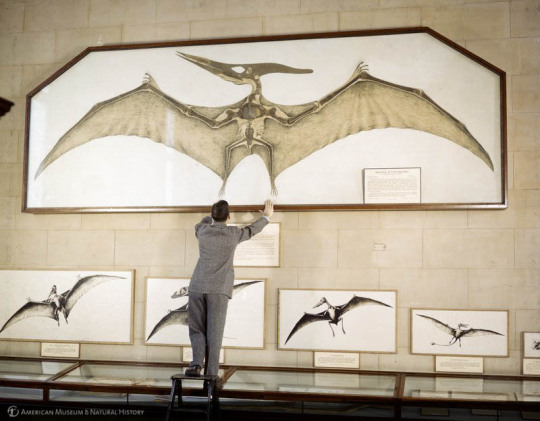
It’s a bird! It’s a plane! It’s… a dinosaur? Nope to all of the above. This Fossil Friday, let’s talk about pterosaurs—the first animals with bones to evolve powered flight. Though they were related to dinosaurs, pterosaurs evolved on a separate branch of the reptile family tree. They ruled the skies for more than 150 million years, evolving into dozens of different species. Some were as small as a paper airplane while others, like Pteranodon pictured here in the Museum's Hall of Late Dinosaurs circa 1940-1960, had a wingspan of more than 20 ft (6 m).
Along with other large pterosaurs, Pteranodon longiceps was first discovered in western Kansas, near a chalk formation called Monument Rocks. Today the region is dry, but at the time this species lived, about 85 million years ago, central North America was covered by a seaway. This large pterosaur likely spent its days flying over the sea. Unlike early species of pterosaurs, Pteranodon and many other Cretaceous-era species didn’t have any teeth. In fact, its genus name means “winged and toothless,” while the second name, longiceps, means “long-headed.”
Today, you can find Pteranodon in the Hall of Vertebrate Origins. We're open daily from 10 am-5:30 pm! Plan your visit.
Photo: Image no. ptc-217 © AMNH Library
#science#amnh#museum#dinosaur#fossil#nature#natural history#paleontology#animals#pterosaur#reptile#did you know#fact of the day#ancient animals#prehistoric animals#vertebrates#fossil friday#pteranodon#archives#flashback friday
667 notes
·
View notes
Note
HI ITS 🐠 ANON (again)!!
COULD I PLEASE GET YOSHIKAGE KIRA WITH HAND MODEL!READER AND DIEGO WITH PALEONTOLOGIST!READER PLEASE AND THANKYOU (theyre my favs and im starved...)
(^‿^✿)
hiii 🐠, sorry for taking a while on this but here u go, thank u for requesting and i hope u enjoy <33

Yoshikage Kira x Hand Model!Reader
The first time he saw your photo in an ad, he paused mid-walk, transfixed. It wasn’t even your face- it was your hands. Smooth, elegant fingers wrapped around a perfume bottle. He memorized every curve.
You met during a small Morioh modeling gig. When you shook his hand, he felt your fingers wrap around his, and for the first time in years, he almost forgot about the severed hands at home.
Your hands were warm. Alive. Not cold and limp. He thought he’d be repulsed by the real thing… but instead, he found himself obsessed.
You always caught him watching your hands when you fidgeted. Sometimes you’d rest one on his chest while talking and he’d quietly touch your knuckles with reverence.
You chalked it up to affection. He didn’t correct you.
One day, you cut your finger during cooking, and Kira looked terrified. Not of the blood- but of the idea that your hand might be scarred. He was more distressed than you.
He started moisturizing your hands for you. Slathering lotion on slowly, tracing your veins, whispering things like “Perfection like this should be preserved forever.”
He secretly took photos of your hands when you were asleep. Not in a creepy way (he’d argue), but in a devotional, worshipful way.
If someone else ever commented on your hands- especially flirtatiously- he'd stare them down until they left. You thought he was just protective. He was silently planning their disappearance.
His obsession rides the line between romantic and terrifying. But your presence calms him more than anything else in his life.
Diego Brando x Paleontologist!Reader
You met in the field. You were dusty, sunburned, bent over a dig site- brushing at fossilized ribs like it was an art. Diego swore the dirt sparkled around you.
“You’re doing it wrong,” he said the first time. “You’re scratching too deep.” You didn’t even look up. “And you’re standing on a partial femur, jackass.”
That was the moment he knew he was in trouble.
Your knowledge amazed him. You quoted ages, formations, skeletal structures without blinking. He found himself wanting to listen when you talked.
You once corrected him during a public panel and he nearly snapped- until you leaned in afterward and said, “Sorry, couldn’t let a future dinosaur expert be wrong in front of sponsors.”
He started showing off for you during his races. Flipping his hair, wiping sweat from his brow dramatically, being a smug bastard when he saw you staring.
But you caught him babying Silver Bullet once, cradling its hoof after a race. He flushed hard and denied it, but you smiled. You understood.
Sometimes you’ll be organizing fossils late at night and he’ll show up, silent, and gently rest his chin on your shoulder. “Tell me again what era this one’s from.”
You compare him to raptors all the time. “Small, vicious, secretly loyal.” He always snarls- but he never disagrees.
Once, you carved your initials into a petrified tree branch you found together. He did the same, next to yours. Neither of you have ever mentioned it since- but you both know where it is.
56 notes
·
View notes
Text

Dinovember 2024 Day 5: Hadrosaurus foulkii
This species, which measured 7-8 meters long, weighed about 2-4 tons, and lived about 80.5-78.5 million years ago on a coastal floodplain in what is now the Woodbury Formation of New Jersey, was in 1858 the first dinosaur ever to be described in the United States and North America from good fossil remains. Ten years later the only known specimen of Hadrosaurus foulkii became the first skeleton of a dinosaur ever to be mounted and put on display at a public institution-the Philadelphia Academy of Natural Sciences-by the renowned English naturalist-sculptor Benjamin Waterhouse Hawkins, who is also famous for designing the sculptures of dinosaurs and other prehistoric animals on the grounds of London’s Crystal Palace.
Hadrosaurus lends its name to the Hadrosauridae, the large, battery-toothed, herd-dwelling and hoof-toed ornithopods that dominated Laurasia and even Patagonia throughout the Late Cretaceous, and it was also part of a fauna of unique hadrosaurids that lived on the eastern Island continent of Appalachia. These included the 3-meter-long Claosaurus from the Niobrara Formation of Kansas, the basal Eotrachodon and the 4.5-meter-long Lophorothon atopus from the Moorevile Chalk Formation of Alabama, and the truly gigantic 10 to 17-meter-long Hypsibelma.
#paleoart#dinosaur#dinosaurs#paleontology#dinovember 2024#draw dinovember#dinovember#hadrosaurus#hadrosaurs#hadrosaur
76 notes
·
View notes
Photo

🏔 Die Versteinerungen des nord-deutschen Kreidegebirges / Hannover: Hahn, 1840-1841. Original source Image description: Historical black-and-white illustration titled "Die Versteinerungen des nord-deutschen Kreidegebirges," depicting various fossils from the North German chalk mountains. The image presents twelve detailed fossil specimens, including coral-like branching patterns, cylindrical and conical shapes, and textured surfaces with small circular depressions. Each fossil is numbered and labeled with scientific names in cursive at the bottom. The fossils are arranged neatly on a beige background with handwritten labels, highlighting the geological and paleontological features associated with mountain formations in the Cretaceous region.
17 notes
·
View notes
Text

soil/rock pronoun pack!
Notes:
1. No gems because I'm pretty sure they have quite a few lists already + there's a TON of types.
2. I tried to go for the most common rock types + ones that can be turned into pronouns relatively easily.
3. I generally only included variants I personally liked- pronouns cut like "dio/diorite" could also be styled "diorite/diorite" and so on. Rocks ending in -ine or -ite I tried to split there at the object pronoun.
4. Image IDs are available in the alt text to avoid clutter + also the images are just decorative.
format: subject/object/possessive adjective/possessive pronouns/reflexive. e.g. she/her/her/hers/herself, he/him/his/his/himself

soil words
allu/alluv/allus/allus/alluself [from alluvium]
clay/clay/clays/clays/clayself
clod/clod/clods/clods/clodself
collu/colluv/collus/collus/colluself [from colluvium]
dirt/dirt/dirts/dirts/dirtself
earth/earth/earths/earths/earthself
gley/gley/gleys/gleys/gleyself
gley/sol/sols/sols/solself
ground/ground/grounds/grounds/groundself
hum/hum/humus/humus/humuself [the first hum is pronounced like it is in humus]
loam/loam/loams/loams/loamself
loa/loam/loams/loams/loamself
mud/mud/muds/muds/mudself
peat/peat/peats/peats/peatself
sand/sand/sands/sands/sandself
sed/sedim/sediments/sediments/sedimentself
silt/silt/silts/silts/siltself
soil/soil/soils/soils/soilself
sub/soil/soils/soils/soilself
top/soil/soils/soils/soilself

living ground-related words
arch/archaea/archaeas/archaeas/archaeaself
bacteria/bacteria/bacterias/bacterias/bacteriaself
bug/bug/bugs/bugs/bugself
bur/burrow/burrows/burrows/burrowself
centi/pede/pedes/pedes/pedeself
debri/debri/debris/debris/debriself
grub/grub/grubs/grubs/grubself
hy/hypha/hyphas/hyphas/hyphaself
insect/insect/insects/insects/insectself
lit/litter/litters/litters/litterself
milli/pede/pedes/pedes/pedeself
mite/mite/mites/mites/miteself
nema/tode/todes/todes/todeself
nest/nest/nests/nests/nestself
pill/bug/bugs/bugs/bugself
rhizo/rhizo/rhizos/rhizos/rhizoself
root/root/roots/roots/rootself
spring/tail/tails/tails/tailself
worm/worm/worms/worms/wormself

rock words
and/and/andes/andes/andeself [from andesite]
basalt/basalt/basalts/basalts/basaltself
bed/rock/rocks/rocks/rockself
brec/breccia/breccias/breccias/brecciaself
chalk/chalk/chalks/chalks/chalkself
dio/diorite/diorites/diorites/dioriteself
dio/rite/rites/rites/riteself
dolom/dolomite/dolomites/dolomites/dolomiteself
dun/dunite/dunites/dunites/duniteself
feld/spar/spars/spars/sparself
foss/fossil/fossils/fossils/fossilself
ge/ode/odes/odes/odeself
gnei/gnei/gneiss/gneiss/gneisself
gran/granite/granites/granites/graniteself
grav/gravel/gravels/gravels/gravelself
ich/ichnite/ichnites/ichnites/ichniteself
igne/igneou/igneous/igneous/igneouself
li/lime/limes/limes/limeself
lime/lime/limes/limes/limeself
mar/marble/marbles/marbles/marbleself
meta/morph/morphs/morphs/morphself [from metamorphic]
mi/ca/cas/cas/caself
mica/mica/micas/micas/micaself
obsi/dian/dians/dians/dianself
oliv/olivine/olivines/olivines/olivineself
pebb/pebble/pebbles/pebbles/pebbleself
petri/petrify/petrifies/petrifies/petrifieself
pu/pum/pums/pums/pumself
pum/pumice/pumices/pumices/pumiceself
rhyol/rhyolite/rhyolites/rhyolites/rhyoliteself
rock/rock/rocks/rocks/rockself
sedi/sediment/sediments/sediments/sedimentself
sha/shale/shales/shales/shaleself
shale/shale/shales/shales/shaleself
sla/slate/slates/slates/slateself
slate/slate/slates/slates/slateself
sto/stone/stones/stones/stoneself
stone/stone/stones/stones/stoneself
qua/quartz/quartzs/quartzs/quartzself
quartz/quartz/quartzs/quartzs/quartzself
talc/talc/talcs/talcs/talcself
travert/travertine/travertines/travertines/travertineself
#pronoun pack#neopronouns#rock pronouns#dirt pronouns#soil pronouns#ground pronouns#themed pronouns#pronoun hoarder#pronoun collector#not coining#soil pronoun pack#rock pronoun pack#dirt pronoun pack#ground pronoun pack
13 notes
·
View notes
Text
Secrets of England: Unveiling Hidden Treasures beyond the Crowds
There are untold astounding places to explore in England, including enormous national parks, stunning beaches, cultural cities, & majestic castles. Residents of England are constantly on the lookout for novel places to see as staycations grow in fame. We would want to show you a new England. Here is our analysis of the off-the beaten England sightseeing places.
Off-the-Beat Attractions in England
Here are some must-see England tourist attractions that are off-the-beaten.
The Jurassic Coast

This is a UNESCO World Heritage Site that is home to spectacular coastal scenery, fossils, and unusual geological formations. It is situated on the southern coast of England.
Lundy Island
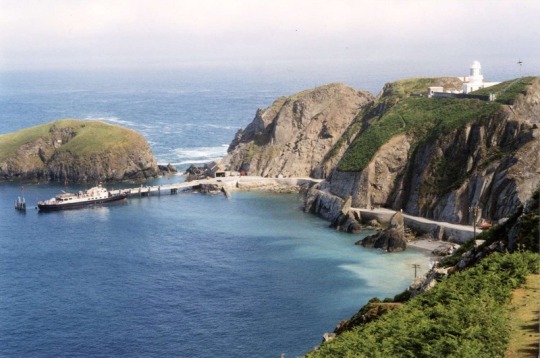
Image credit- johngrimes.co.uk
A shelter for wildlife, such as puffins and seals, Lundy Island is located in the Bristol Channel. It is a tranquil getaway that is far away.
Avebury

Frequently overshadowed via Stonehenge, Avebury has a larger and no less enigmatic stone circle. Even walking amid the stones is possible.
The Lost Gardens of Heligan
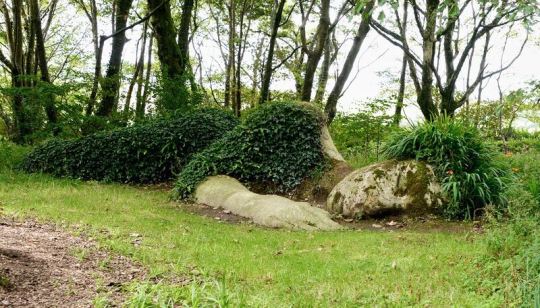
These gardens, which are in Cornwall, were long forgotten about before being found and brought back to their former splendor.
Stourhead
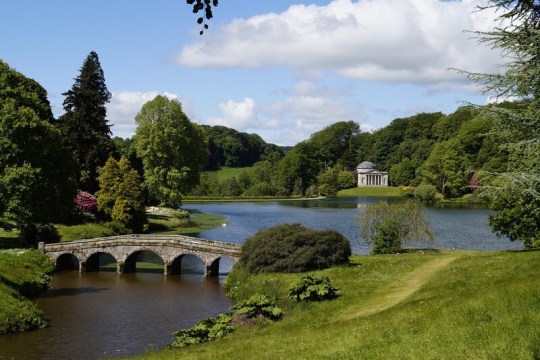
With its traditional temples, bridges, and grottoes, this Wiltshire manicured park from the 18th century is a beautiful site to explore.
Durham Cathedral

The UNESCO World Heritage Site Durham Cathedral and the ancient Durham Castle are located in this northeastern English city.
The Norman Gate

Many people frequently overlook the Norman Gate, in Windsor Castle which is located at Lower Ward entrance. It is an amazing piece of architecture & was built into the castle's original medieval framework.
Rievaulx Abbey
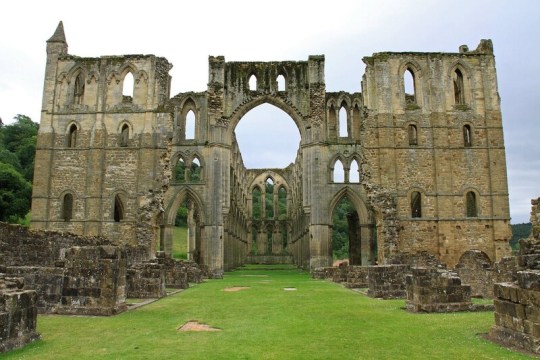
This Cistercian abbey is a gorgeous and tranquil location tucked away in North York Moors.
The Seven Sisters

Such impressive white chalk cliffs in Sussex offer wonderful hiking opportunities and expansive vistas of the English Channel.
The Cotswolds
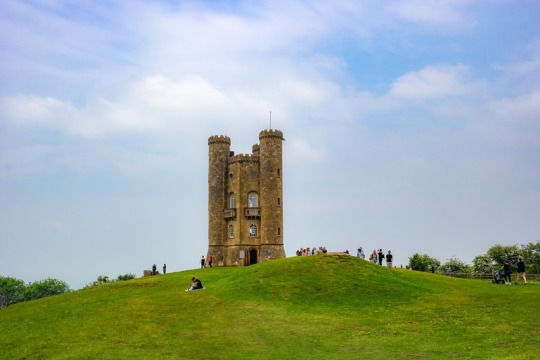
Although not completely off the beaten track, smaller towns like Bibury & Castle Combe provide a more tranquil and conventional English rural experience.
Museum of Bath
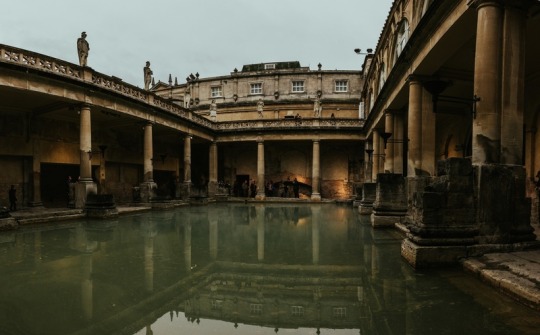
Housed in a historic structure, this museum provides an overview of Bath's architectural heritage and is frequently less crowded than the city's top tourist destinations. There are several interesting things to do near bath for instance Oxford.
Aysgarth Falls Yorkshire

This group of waterfalls in Yorkshire Dales is a tranquil and lovely place to hike.
Dungeness
A shingle beach, vintage fishing boats, & an abandoned nuclear power plant are some of the peculiar and unsettling elements of this Kent coast location.
The Tamar Valley
With its trees, meadows, and Tamar River, this region on the boundary between Devon & Cornwall is a hidden jewel of natural beauty.
The York Art Gallery is home to a remarkable collection of artworks, including pieces by well-known painters like Lowry & Hockney, despite not being as well-known as some other art institutions in the UK. This is amid the best things to do in York.
Why England’s Off-the-Beat Path Attractions so Popular?
For a variety of interesting sounding reasons, off-the-beaten-path tourism in England has grown in popularity as tourists look for authentic and one-of-a-kind experiences. Here are some strong arguments for why these hidden best places to visit in England so alluring.
Hidden treasures and lesser-known locations in England provide a change from the typical tourist crowds. Exploring these uncharted territories can be an exciting journey. Visitors can fully immerse themselves in the customs, traditions, & way of life of the area by venturing off the beaten path. These less-traveled areas offer genuine encounters that let visitors see England as it really is, unfiltered by tourism.
Destinations that are off the usual route can have breathtaking natural beauty, from tranquil farmland views to rocky coasts. England is rife with history, and undiscovered places can include historical gems that may not be as well-known or popular.
These isolated spots give a respite from the bustle of more popular tourist destinations and offer a sense of peace & tranquility that is difficult to obtain elsewhere. A sense of excitement and discovery are sparked by exploring off-the-beaten-path locations, making the journey itself an unforgettable aspect of the vacation experience.
Wrapping Up As you find areas that not everyone gets the chance to view, discovering secret famous places in England and following the path less taken can give you a sense of success.
3 notes
·
View notes
Text
When people have Egypt in their minds, they think of Nile, ancient temples, or gigantic Pyramids. Yet another side of the country exists beyond its monuments and museums-a big world of desert landscapes promising a good set of thrilling adventures for nature lovers.
The Western Desert: Egypt's Hidden Treasure The Western Desert sprawls over two-thirds of Egypt and offers gaping sand dunes, black volcanic hills, and thirsty oases. Some of its attractions include:
The White Desert (Sahara el-Beida): This is the land of surreal chalk rock formations similar to those from another world. Camping here under the stars is engulfed by nearly every sort of thrill.
The Black Desert: Named after the dark monoxide volcanic hills, the Black Desert shows some stark contrast against the colors of the golden sand.
Bahariya, Farafra, Dakhla, and Kharga Oases: These lush spots in the desert are ideal for encroaching on ancient ruins, hot springs, and palm groves.
The Siwa Oasis: The Gem of the Desert Situated near the border with Libya, Siwa Oasis is considered one of Egypt's most beautiful spots. With saltlakes, ancient ruins such as the Temple of the Oracle of Amun, and the extraordinary culture of the Berbers, Siwa guarantees an experience that is at once calming and adventurous.
Activities for Desert Explorers 4x4 Safari Expeditions: Feel your adrenaline rush and speed over rolling sand dunes in an off-road vehicle alongside experienced Bedouin guides. Sandboarding: Sandboard down giant dunes, and this experience will be etched in your mind forever. Camel Trekking: Travelling slowly, peacefully, and in stunning charm-the manner in which ancient traders travelled. The desert camping offers great fun under the stars: Have a traditional Bedouin dinner on the dunes accompanied by music around the campfire while looking up at a fully star-lit sky. Wadi El Hitan (Valley of the Whales): Completely marry adventure and Wilted history of fossilized remains of ancient whales washed out across the desert-A surrealist depiction of Egyptian prehistory.
Why Do You Book Desert Adventures in Egypt? It goes beyond a trip-it is a dive into silence, beauty, and ancient grounds untouched by modern life. The deserts of Egypt will cater to your thirst for excitement and peace in far greater measure.
Activities for Desert Explorers
4x4 Safari Expeditions: Speed across rolling sand dunes in an off-road vehicle with experienced Bedouin guides.
Sandboarding: Glide down towering sand dunes for an adrenaline rush you won’t forget.
Camel Trekking: Experience travel like ancient traders did—slow, peaceful, and breathtakingly beautiful.
Camping Under the Stars: Enjoy traditional Bedouin meals, music by the fire, and a night sky filled with countless stars.
Wadi El Hitan (Valley of the Whales):
For history and adventure combined, visit this UNESCO World Heritage Site, where fossilized remains of ancient whales are scattered across the desert—a surreal reminder of Egypt’s prehistoric past.
Why Choose Desert Adventures in Egypt?
It’s not just a trip—it’s a journey into silence, beauty, and ancient landscapes untouched by modern life. Whether you’re seeking thrills or tranquility, Egypt’s deserts deliver both in abundance.
Looking for a unique experience on your next trip? Add a desert adventure to your Egypt travel packages and discover a world few travelers ever see. You can go through all of these places with Cairo Top Tours, which offer various travel packages and day tours, even if it is a classical or adventurous tour. on of the options you should try is to discover the Cairo and White Desert Adventure Tour. Lying in the White Desert, the massive white limestone rocks offer a bright and cheerful landscape for such lovely scenery. We provide Egypt trips of Cairo's main attractions, including the Egyptian Museum, which dates back about 5,000 years, and the great pyramids of Giza, which were constructed by rulers during Egypt's fourth dynasty. The tour involves a trip to the charming Bahariya Oasis and the White Desert.
Also, you can take a package to experience the beauty of the River Nile. Immerse yourself in a Nile Cruise Tour from Luxor on an interesting voyage that involves the MS Nile Radamis by taking part in an incredible Nile Cruise that departs from Luxor and Aswan. Our Egypt travel packages offer an unmatched experience that skilfully combines ancient wonders with contemporary luxury, in addition to the breathtaking natural scenery.
#cairo top tours#egypt holidays#egypt travel#giza egypt#ramadan#giza pyramids#egypt#history#pyramids
0 notes
Text
Calcium Carbonate: Nature’s Most Common Mineral Explained

Calcium carbonate is one of the most abundant and essential minerals found in nature. Present in rocks, shells, and even the human body, this versatile compound has carved out a critical role across multiple industries including construction, agriculture, pharmaceuticals, paper, plastics, and more. With its vast range of uses and natural occurrence, calcium carbonate has earned its title as nature’s most common mineral. In India, the mineral's accessibility, combined with technological advancements, has led to the rise of a robust manufacturing sector. Today, choosing a reliable Calcium Carbonate Manufacturer in India is crucial for industries seeking high-purity and application-specific material solutions.
What is Calcium Carbonate?
Chemically represented as CaCO₃, calcium carbonate is a white, odorless compound that occurs naturally in limestone, chalk, marble, and shells of marine organisms. It is a carbonic salt of calcium that is highly stable, non-toxic, and insoluble in water but reactive with acids. Its key properties include:
High whiteness and brightness
Inert chemical nature
High melting point
Mildly alkaline pH
Good dispersion in polymers and liquids
These attributes make calcium carbonate a go-to mineral in a wide array of industrial and commercial applications.
Sources of Calcium Carbonate
Calcium carbonate is primarily sourced from natural deposits of limestone, marble, and chalk. These geological formations are composed largely of fossilized remains and sedimentary processes that took place over millions of years. The most common forms include:
Ground Calcium Carbonate (GCC): Produced by mechanically grinding limestone into fine powder.
Precipitated Calcium Carbonate (PCC): Chemically synthesized by reacting calcium hydroxide with carbon dioxide.
Both GCC and PCC have distinct characteristics and are used based on specific industry needs.
Key Applications of Calcium Carbonate
1. Construction and Building Materials
Calcium carbonate is a foundational material in the construction industry. It is used as a primary ingredient in cement, concrete, and mortar. Its inclusion enhances mechanical strength, workability, and durability. Finely ground calcium carbonate is also used in paints, coatings, and adhesives to improve brightness and consistency.
2. Plastics and Polymers
In the plastics industry, calcium carbonate acts as a cost-effective filler and performance enhancer. It increases the rigidity, impact strength, and thermal conductivity of plastic products while reducing material costs. It is widely used in PVC pipes, cable insulation, film production, and packaging materials.
3. Paper and Pulp
Calcium carbonate is one of the most commonly used fillers in the paper industry. It improves the whiteness, opacity, and smoothness of paper, providing better printing surfaces. In coated paper products, it enhances gloss and printability while reducing production costs.
4. Pharmaceutical and Food Industries
As a safe and bioavailable source of calcium, CaCO₃ is used in antacids, dietary supplements, and calcium-fortified foods. Its gentle alkalinity helps neutralize stomach acids and maintain digestive health. Additionally, calcium carbonate serves as a food additive (E170), a whitening agent in toothpaste, and a bulking agent in tablets.
5. Agriculture and Soil Treatment
Agriculturally, calcium carbonate is used to correct soil acidity (liming) and replenish essential calcium nutrients. It improves soil structure, promotes microbial activity, and enhances nutrient absorption by crops. It also plays a role in animal feed as a dietary calcium supplement for livestock and poultry.
6. Environmental Uses
In environmental applications, calcium carbonate is used in flue gas desulfurization (FGD) to remove sulfur dioxide from power plant emissions. It is also used in water treatment plants to neutralize acidic water and adjust pH levels.
The Indian Calcium Carbonate Industry
India is rich in limestone reserves, making it a prime location for calcium carbonate production. With increasing demand from domestic and global markets, the country has developed a mature manufacturing ecosystem. From small-scale units to large industrial plants, Indian manufacturers supply a wide spectrum of GCC and PCC grades tailored to meet specific industrial standards.
A reputable Calcium Carbonate Manufacturer in India not only provides high-quality raw materials but also offers customization, bulk packaging, and technical support. Indian manufacturers have also become competitive in export markets due to cost efficiency, quality control, and consistent supply chains.
Choosing the Right Calcium Carbonate Manufacturer in India
With numerous suppliers in the market, selecting the right manufacturer is essential. Here are key factors to consider:
1. Purity and Composition
Look for manufacturers that provide calcium carbonate with high CaCO₃ content (usually above 98%) and minimal impurities such as iron, silica, and heavy metals.
2. Particle Size and Distribution
Different applications require varying particle sizes—from coarse fillers to ultra-fine micronized powders. Reliable manufacturers offer a range of size options with tight control over particle distribution.
3. GCC vs. PCC Expertise
Depending on your industry, you may need either ground or precipitated calcium carbonate. A good manufacturer should be able to recommend the right type based on your technical requirements.
4. Production Capacity
Scalability is important, especially for large industries with ongoing requirements. Established Indian suppliers operate high-capacity plants equipped with modern grinding, classification, and surface treatment technologies.
5. Quality Assurance and Testing
Choose a supplier with ISO certification and in-house laboratories that conduct rigorous quality tests, including brightness, whiteness, moisture content, and chemical analysis.
6. Sustainable Practices
Environmental compliance is increasingly important. Top manufacturers implement eco-friendly mining, dust control, and waste management systems to reduce their environmental impact.
Conclusion
Calcium carbonate is truly nature’s most ubiquitous and useful mineral, playing a vital role in countless everyday products and industrial processes. Whether it’s strengthening construction materials, enriching soil, making paper brighter, or producing life-saving medicines, its applications are far-reaching and indispensable.
India’s rich natural resources, coupled with an advanced manufacturing base, have made it a key player in the global calcium carbonate market. Partnering with a trusted Calcium Carbonate Manufacturer in India ensures not only product quality and cost-effectiveness but also reliable technical support and sustainable sourcing.
0 notes
Text
Desert safari in Egypt
Desert safari in Egypt offers a unique opportunity to explore the vast and breathtaking landscapes while connecting with the country's rich history and traditions. These excursions allow visitors to experience the Bedouin lifestyle, including traditional music, dance, and cuisine, providing a deeper understanding of the region's cultural heritage. Additionally, desert safaris are a way to appreciate the natural beauty and resilience of the desert environment that has been an integral part of Egyptian culture for centuries.
Gara Cave Safari is an unforgettable adventure that takes you deep into the heart of nature. As you explore the cave, you'll encounter glow-in-the-dark insects that light up the walls with their bioluminescence. Outside, rare species of birds with vibrant plumage can be seen, along with elusive mammals like the cave-dwelling bats and the curious rock-hopping marsupials.
Cairo and Safari Desert Tours offer a unique blend of cultural exploration and thrilling adventure. In Cairo, visitors can immerse themselves in the rich history of ancient Egypt by visiting iconic landmarks such as the Pyramids of Giza and the Egyptian Museum. The Safari Desert Tours provide an exhilarating experience, allowing travelers to explore the breathtaking landscapes of the desert, enjoy camel rides, and witness stunning sunsets over the dunes.
3 Days White Desert and Wadi Al Hitan Tours offer an unforgettable journey through Egypt's stunning natural landscapes. Explore the unique white sand formations of the desert and marvel at the ancient fossils of Wadi Al Hitan, a UNESCO World Heritage Site. This tour combines adventure, history, and breathtaking scenery.
Desert Safari by Quad Bike at Giza Pyramids offers an exhilarating experience, allowing you to explore the iconic pyramids and the surrounding desert landscape. You'll ride through the golden sands, enjoying breathtaking views of the ancient wonders and the vast expanse of the desert.
Cairo, Nile Cruise, and Safari Tour package includes visits to iconic landmarks such as the Pyramids of Giza, the Sphinx, and the Egyptian Museum. The Nile Cruise offers a unique perspective of Egypt's ancient history, while the Safari Tour provides an adventurous exploration of the desert landscape and its wildlife.
Tour To Siwa Oasis From Cairo is a unique experience that allows you to explore the natural beauty and cultural heritage of Egypt. This tour takes you from the bustling city of Cairo to the serene Siwa Oasis, where you can enjoy the stunning landscapes, visit historical sites, and immerse yourself in the local culture.
.Overnight Bahariya Oasis & The White Desert is a unique experience that allows you to explore the stunning landscapes of Egypt's Western Desert. The Bahariya Oasis is known for its hot springs, palm groves, and ancient ruins, while the White Desert is famous for its surreal chalk rock formations that resemble sculptures.
One of our desert safari in Egypt
§ Day Tour To Fayoum From Cairo
§ Travel through Time on our legendary Tours from Cairo to Fayoum and the Valley of the Whales, Visit Wadi Hitan, the paleontological site where fossils of some of the earliest forms of whales can be found, You can also explore El Fayoum Oasis, El Fayoum Water Wheels, and Qarun Lake. Visiting these sites provides a unique opportunity to explore some of the earliest forms of life and to witness the stunning beauty of the desert. The tour gives travelers the chance to experience the rich culture and history of the area while also enjoying the natural wonders of this breathtaking region.
§ Pick up from the hotel by our guide, and start your day touring Fayoum from Cairo with a visit to Wadi Al Rayan in the city center, followed by Wadi Hitan, also known as the “Valley of the Whales Protected Area” and the Mountain of Mudawara. We continue our tour to Qarun Lake, one of the oldest natural lakes in the world, and watch the amazing Fayoum Oasis, relax and enjoy lunch in a good restaurant.
§ Later, we will drive you back to your hotel in Cairo.
§ The suggested 1-day tours will include the following:
§ § Private speaking Egyptologist tour guide.
§ § Transport with an A/C van for all the mentioned sites.
§ § Entrance fees for all the mentioned sites.
§ § Lunch meal at a local restaurant in Fayoum.
§ § Mineral water.
§ § Service charge and tax.
§ The
§ 1day tours will not include the following:
§ § Visa entry to Egypt.
§ § Optional tours.
§ § Any other items not mentioned.
§ § Tipping kitty.
§
§ For more:
§
§ Egypt Desert Safari : https://bit.ly/404yLX2
§ Website: https://jana.tours/
§ Whatsapp+201143320224
§ Email:[email protected]
0 notes
Photo

Fossil Chalk Fish Bones Cretaceous Grey Chalk Osteichthyes Sussex UK Genuine Specimen
Fossil Chalk Fish Bones – Osteichthyes
Geological Period: Cretaceous (Late)
Age: Approximately 100 to 66 million years ago
Formation: Grey Chalk Subgroup
Locality: Clyde, Sussex, United Kingdom
This listing presents a fascinating fragment of fossilised fish bones from a bony fish (class Osteichthyes), embedded in the iconic Grey Chalk of southern England. Recovered from Clyde, Sussex, this specimen dates to the Late Cretaceous, a time when much of the UK was submerged beneath a shallow, warm sea.
The Grey Chalk Subgroup is part of the broader Chalk Group, deposited during the Late Cretaceous and composed primarily of coccolith-rich calcareous sediments. These marine chalks frequently yield well-preserved micro- and macrofossils, including the remains of fish, marine reptiles, ammonites, and echinoderms.
Fish remains from this unit, including bones, scales, and teeth, are relatively scarce and often highly fragmented, making well-preserved examples like this a prized find. The bones may include partial vertebrae, fin rays, or cranial fragments — each offering insights into the structure and diversity of ancient marine vertebrates.
Actual Specimen Pictured: You will receive the exact item shown in the photo.
Scale: 1cm cube included for accurate sizing. Please see image.
Condition: Natural preservation in matrix; stable and suitable for display or study.
Ideal for:
Fossil collectors and palaeontology enthusiasts
Educational settings and museum reference
Marine fossil displays
Gifts for natural history lovers
All of our Fossils are 100% Genuine Specimens & come with a Certificate of Authenticity.
Our fossils are responsibly sourced and described with detailed geological and taxonomic accuracy.
#fossil fish bones#chalk fish fossil#Cretaceous fish remains#Grey Chalk Formation#Sussex fossil#Clyde UK fossil#bony fish fossil#Osteichthyes fossil#British fossil fish#authentic chalk fossil#real fish bones#Mesozoic marine fossil#UK fossil vertebrate#fish bone slab#genuine Cretaceous fossil
0 notes
Text
🧭✨ Hidden Gems of Egypt You’ve Never Heard Of!
Think Egypt is just pyramids and the Nile? Think again! Here are 3 off-the-beaten-path treasures waiting to be explored:
🌿 Siwa Oasis Tucked away in the Western Desert, this serene Berber town is home to ancient temples, salt lakes, and legendary sunsets. Pure magic.

🏜️ The White Desert A surreal landscape of chalk-white rock formations that look like something from another planet. Camp under the stars for a once-in-a-lifetime experience.

⛰️ Wadi El Hitan (Valley of the Whales) UNESCO-listed and otherworldly, this fossil-filled valley tells the story of life from sea to land.
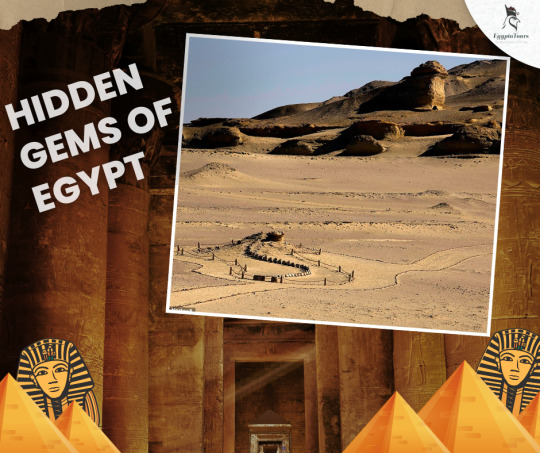
Forget the crowds—discover Egypt’s best-kept secrets. 📍Which one is going on your bucket list?
0 notes
Text
10 Stunning Pyrite Crystals and How They’re Formed in Nature
The allure of crystals has risen manifold. It’s no longer a gemstone for jewelry, as it once used to be, but is admired for various other valuable reasons. Crystals are generally associated with beauty, b10 Stunning Pyrite Crystals and How They’re Formed in Natureut their metaphysical properties make them more charismatic. Metaphysical properties may not have any scientifically proven shreds of evidence but are based on individual experiences and spiritual beliefs.

Pyrite Crystals: How they are formed in Nature
Pyrite crystals are formed by hydrothermal systems where sulfurous fluids react with iron-rich rocky minerals. They are also found in sedimentary environments where oxygen is absent, and bacterial activities take place. The third formation is through the metamorphic process where high temperature alters the existing minerals into pyrite.
There is one more thing about pyrite. As gold is found beside pyrite, this mineral serves as a guide to reach the gold depositions. This marvelous mineral has a golden sheen and luster that resembles gold, making it a perfect piece of decoration or part of jewelry.
Cultural and Metaphysical Significance
Ancient cultures used pyrite to make mirrors and ornaments. In the metaphysical context, pyrite is believed to ward off negative energies with its protective aura and activate intelligence. It’s known as a talisman of richness and success. With a distinctive golden hue, it has a touch of elegance if worn as jewelry or kept as decorative pieces.
10 Stunning Pyrite Crystals and their Formation

1. Perfect Pyrite Cubes
The most ideal forms of pyrites are cubic crystals. They are found in Spain and their perfect cubic shape seems like they are manmade. They are formed in low temperatures where iron and sulfur contents are found in an orderly structure.
2. Octahedral Pyrite
These crystals aren’t as common as cubic pyrite crystals but are equally charming. It is called octahedral pyrite because it is an eight-faced crystal. When formed in a sedimentary environment, these crystals get more intricate shapes.
3. Framboidal Pyrite
Framboidal pyrites look like tiny raspberries and are formed in oxygen-deficient conditions, mostly in marine residues. This structure can’t be seen with bare eyes and requires a microscope to see its clear shape. It is a collection of spherically shaped tiny crystals.
4. Pyritohedron Crystals
This is a unique 12-faced pyrite crystal, which usually forms when combined with other sulfide minerals in depths of the earth having different temperatures and pressures.
5. Massive Pyrite Veins
Massive pyrite appears as a solid, vein-like structure in rocks. These layers form in hydrothermal veins, where hot, sulfur-rich fluids react with iron-dense minerals in the host rock.
6. Botryoidal Pyrite
Botryoidal pyrites are round, grape-like structured crystals. It is commonly found in environments with low temperatures.
7. Pyrite Suns
Saucer-like pyrite suns are radiating structures that are generally found in coal mines. They are formed in high-pressure, oxygen-deficient environments.
8. Fossilized Pyrite

Pyrite enhances stability and keeps off negative energies, bringing harmony.
9. Radiating Pyrite Clusters
These circular collections of pyrite clusters look like fireworks that have been frozen in stones. They are usually found in chalk and limestones
These crystals are believed to form a field of protection, aiding in creating a positive vibration around you.
10. Pyrite in Quartz
When quartz forms a ring around pyrite, the golden hue within the transparent quartz forms a beautiful creation.
Quartz adds up to the vitalities of pyrite, attracting wealth and abundance. Due to the belief that pyrite has masculine energies, it heightens confidence and strength.
Feel the Sensation
Pyrite with a golden tinge, aura, and elegance, can be worn as pendants or placed in wallets as crystals or as decorative pieces like pyrite pyramids. Pyrite crystals are believed to enrich strength and confidence and attract financial and career growth. They bring wealth and abundance together with positive energies into your homes and lives. The more you understand the exceptional qualities of pyrite crystals, the deeper your desire will grow to possess one.
Money Ratnam – An Amalgamation of Abundance, Health, and Positivity
If you are seeking pyrite crystals to energize your environment and attract abundance into your life, we suggest Money Ratnam Crystals. It is a well-balanced arrangement of Pyrite, Green Aventurine, Green Jade, Citrine, and Quartz to bring prosperity, health, and success with positive energy around you.
These stones are arranged in various combinations in a Money Ratnam Pendant, a Money Ratnam Pyramid, and a Wish Ratnam Crystal. So, don’t leave anything to fate, go for this combination, because your right decision now will lead to endless benefits and blessings.
1 note
·
View note
Text
Ten Reasons to Visit England's Jurassic Coast
The Jurassic Coast, a UNESCO World Heritage Site located in southern England, offers an unparalleled journey through 185 million years of Earth’s history. Stretching from Exmouth in East Devon to Studland Bay in Dorset, this 96-mile coastline boasts stunning natural beauty, rich geological heritage, and a variety of activities. Here are 10 compelling reasons to visit England's Jurassic Coast.
1 Geological Marvels The Jurassic Coast is a treasure trove of geological wonders. Visitors can witness layers of rock formations that chronicle the Triassic, Jurassic, and Cretaceous periods. These ancient cliffs reveal fascinating stories of Earth’s past, making it a paradise for geology enthusiasts and curious travelers alike.
Jurassic Coast & Durdle Door Private Day Trip*
2 Fossil Hunting The coastline is renowned for its abundant fossils. Beaches such as Lyme Regis and Charmouth are perfect for fossil hunting, offering the chance to find remnants of ancient marine creatures. Guided fossil walks are available, providing insight into the prehistoric world and tips on how to discover these hidden treasures.

3 Stunning Coastal Walks The South West Coast Path runs along the Jurassic Coast, offering some of the most breathtaking coastal walks in the UK. Whether you're trekking the dramatic cliffs of West Bay or the serene shores of Lulworth Cove, the diverse landscapes provide endless opportunities for exploration and adventure.
4 Iconic Landmarks The Jurassic Coast is home to several iconic natural landmarks. Durdle Door, a magnificent limestone arch, and Old Harry Rocks, a series of chalk formations, are must-see sights. These landmarks not only offer stunning views but also serve as spectacular photo opportunities.

5 Charming Coastal Towns The coastline is dotted with picturesque towns and villages, each with its unique charm. Lyme Regis, known as the "Pearl of Dorset," boasts a historic harbor, quaint shops, and delightful seafood restaurants. Sidmouth, with its Regency architecture and tranquil gardens, provides a perfect blend of natural beauty and cultural heritage.
From Poole: Round-trip Jurassic Coastal Cruise to Swanage*
6 Rich Marine Life The waters off the Jurassic Coast are teeming with marine life. Boat trips and diving excursions offer the chance to encounter dolphins, seals, and a variety of seabirds. The region’s diverse marine habitats make it a prime spot for wildlife enthusiasts and photographers.
7 Historical Significance The area is steeped in history, with ancient forts, castles, and ruins scattered along the coast. Corfe Castle, a medieval fortress with a thousand-year history, and the Roman town house in Dorchester provide a glimpse into England’s rich historical tapestry.

8 Educational Opportunities The Jurassic Coast offers numerous educational experiences. The Lyme Regis Museum and the Etches Collection in Kimmeridge house extensive fossil collections and interactive exhibits. These museums provide valuable insights into the natural history and geological significance of the area.
9 Outdoor Activities Beyond walking and fossil hunting, the Jurassic Coast offers a plethora of outdoor activities. Kayaking, paddleboarding, and coasteering are popular ways to explore the coastline from a different perspective. The varied terrain also provides excellent conditions for rock climbing and paragliding.
Charmouth fossil hunting walks

10 Culinary Delights The region is a haven for food lovers, with a rich array of local produce and seafood. Freshly caught crab, locally sourced cheeses, and traditional cream teas are just a few culinary delights to enjoy. Numerous food festivals and farmers’ markets further celebrate the area’s gastronomic heritage.
Links marked with an asterisk may pay us if you book!
#travel#united kingdom#britain#hotels#jurassic coast#sidmouth#lyme regis#charmouth#fossils#paleontology#ammonite
0 notes
Text
Discover the Fascinating Kingdom of Stone 💎 👑
I'm Hernâni, Your Personal Guide, a passionate and experienced tour guide offering exclusive tours in the Serras de Aire e Candeeiros Nature Park. Based in Mendiga, in the heart of the Nature Park, I bring my expertise for your satisfaction, showcasing the park's incredible geological and biodiversity treasures.
On our website, you can book an unforgettable adventure, featuring guided tours in an all-terrain SUV through the park’s most fascinating GeoSites. Experience the largest chalk massif in Portugal, explore sinkholes, caves, elevated valleys, lapias, lapas, algares, dinosaur footprints, and fossils. :sunrise_over_mountains::blue_car:
Join me for a general tour that encompasses the park's bio and geo diversity, history, and local culture. What sets my tours apart is the accurate yet entertaining information I provide, tailored to the interests of each visitor. Plus, many guests rave about the herbal tea and homemade cake that add a personal touch to the experience.
My motto, "much more than meets the eye," reflects my passion for uncovering the unique details that make the Nature Park special. From the cave environments fostering distinct evolutionary paths to the fossils and dinosaur footprints linking the limestone formation with the Atlantic Ocean's evolution, there's always a story to tell.
I also offer suggestions for charming Rural Tourism accommodations to enhance your visit. To book a tour, visit your usual leading experience sites, or fill out the form on my website, or contact me directly via WhatsApp.
Explore the hidden gems of Serras de Aire e Candeeiros Nature Park with a knowledgeable and friendly guide. With my years of experience and love for adventure, I'll ensure your trip is one you’ll never forget.
Visit us: https://SUVisTTa.pt
#tourist #travelbloggervibes #travelblogger #vacation #sightseeingtour #privateguidedtours #privateguide #excursion #tourguidelife #tourguides #PrivateGuideWorld #tour #privatetourguide #localtours #tourguide #privatetour #localtourguide #sightseeing
0 notes